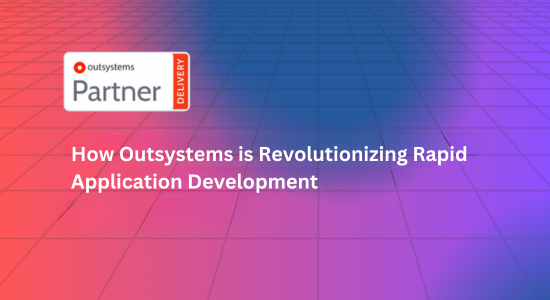Artificial intelligence (AI) is reshaping the software development landscape, making it faster, smarter, and more accessible. OutSystems, a leading low-code platform, has embraced AI to supercharge its development capabilities. This blog explores the AI features in OutSystems and how they can be harnessed to create innovative, intelligent applications with ease.
1. The Role of Outsystems AI in Low-Code Development
AI has become a pivotal force in transforming traditional coding practices, automating repetitive tasks, and providing advanced insights. In low-code development, AI helps bridge the gap between rapid development and complex, customized solutions. OutSystems leverages AI to assist developers in various stages of application development, from coding and testing to deployment and maintenance.
AI’s integration into low-code platforms like OutSystems means developers can achieve more with less effort. It accelerates development timelines, improves application quality, and enhances user experience, all while reducing the need for deep technical expertise.
2. Key AI Capabilities in OutSystems
OutSystems offers a range of AI-driven tools and features designed to enhance the development process:
- AI-Assisted Development: This feature provides real-time suggestions for code snippets, logic flows, and UI components as you build your application. It not only speeds up the development process but also helps new developers get up to speed quickly.
- Predictive Analytics: OutSystems AI can predict potential performance bottlenecks and security issues in your applications, allowing you to address them proactively before they impact users.
- Automated Testing: AI automates the creation and execution of test cases, identifying potential bugs and ensuring that your application meets quality standards. This reduces the time spent on manual testing and increases the reliability of your applications.
- Natural Language Processing (NLP): OutSystems incorporates NLP capabilities, enabling developers to create applications that understand and respond to human language. This is particularly useful for building chatbots, virtual assistants, and other conversational interfaces.
- AI-Driven Insights: OutSystems provides AI-powered analytics that offer insights into application performance, user behavior, and business metrics. These insights can help you make informed decisions about how to optimize and evolve your applications.
3. Benefits of Leveraging AI in Low-Code Development
Integrating AI into low-code development with OutSystems brings numerous advantages:
- Faster Development: AI-assisted development and automated testing accelerate the entire development process, allowing you to deliver applications more quickly.
- Higher Quality: Predictive analytics and automated testing ensure that your applications are robust, secure, and free of critical issues, leading to higher quality outputs.
- Enhanced User Experience: NLP and AI-driven insights enable the creation of applications that offer personalized and intuitive user experiences.
- Cost Efficiency: By automating repetitive tasks and optimizing processes, AI reduces development costs and allows your team to focus on higher-value activities.
4. Practical Steps to Leverage OutSystems AI Capabilities
To fully harness the power of AI in OutSystems, consider the following steps:
- Explore the AI Features: Begin by understanding the AI capabilities built into the OutSystems platform. Familiarize yourself with tools like AI-assisted development, NLP, and AI-driven analytics.
- Incorporate AI Early: Integrate AI features from the start of your project to maximize their impact. For example, use AI suggestions during the design phase to streamline development.
- Use Automated Testing: Implement AI-driven automated testing to catch issues early, ensuring your application is reliable before it reaches users.
- Enhance Interfaces with NLP: Create more engaging user interfaces by integrating NLP. This can be particularly effective in customer service applications, where chatbots and virtual assistants can improve user interactions.
- Analyze and Improve: Continuously monitor your application’s performance using AI-driven insights, and make data-driven decisions to enhance and optimize your app over time.
5. Real-World Applications of OutSystems AI Capabilities
OutSystems’ AI capabilities have been applied successfully across various industries, showcasing their versatility and impact:
- Healthcare: AI-driven predictive analytics in OutSystems help healthcare providers manage patient data, forecast healthcare trends, and improve decision-making. NLP features enhance patient engagement through chatbots and virtual assistants.
- Financial Services: Financial institutions use OutSystems AI to automate processes like fraud detection, risk assessment, and customer service, delivering faster and more accurate services to their clients.
- Retail: Retailers leverage AI in OutSystems to personalize customer experiences, optimize inventory management, and drive sales through data-driven marketing campaigns.
6. Challenges and Considerations
While AI in low-code development offers significant benefits, there are challenges to be aware of:
- Data Privacy and Security: AI-driven applications often rely on large amounts of data, raising concerns about privacy and security. It’s essential to implement robust security measures and comply with relevant regulations.
- Complexity of AI Models: While OutSystems simplifies AI integration, understanding and applying complex AI models may require specialized skills. Developers should ensure they have the necessary knowledge or seek support when needed.
- Balancing AI and Human Input: While AI can automate many tasks, it’s important to maintain a balance between AI-driven automation and human oversight. This ensures that the application remains aligned with business goals and user needs.
7. The Future of AI in Low-Code Development
The future of AI in OutSystems and low-code development is promising, with continuous advancements expected:
- Deeper Machine Learning Integration: OutSystems may further integrate machine learning models, enabling more advanced predictive analytics and personalized user experiences.
- AI-Driven Development Tools: Expect more intelligent development environments where AI not only suggests code but also automates entire workflows and optimizes application performance in real time.
- Personalized User Experiences: AI will continue to enhance the ability to create highly personalized applications that adapt to user behaviors and preferences, driving better engagement and outcomes.
Conclusion
OutSystems has successfully integrated AI into its low-code platform, providing developers with powerful tools to build smarter, more efficient applications. By leveraging AI capabilities, developers can accelerate their work, enhance application quality, and create innovative solutions that meet the demands of modern businesses. As AI continues to evolve, its role in low-code development will only grow, offering even more opportunities for innovation and efficiency.








